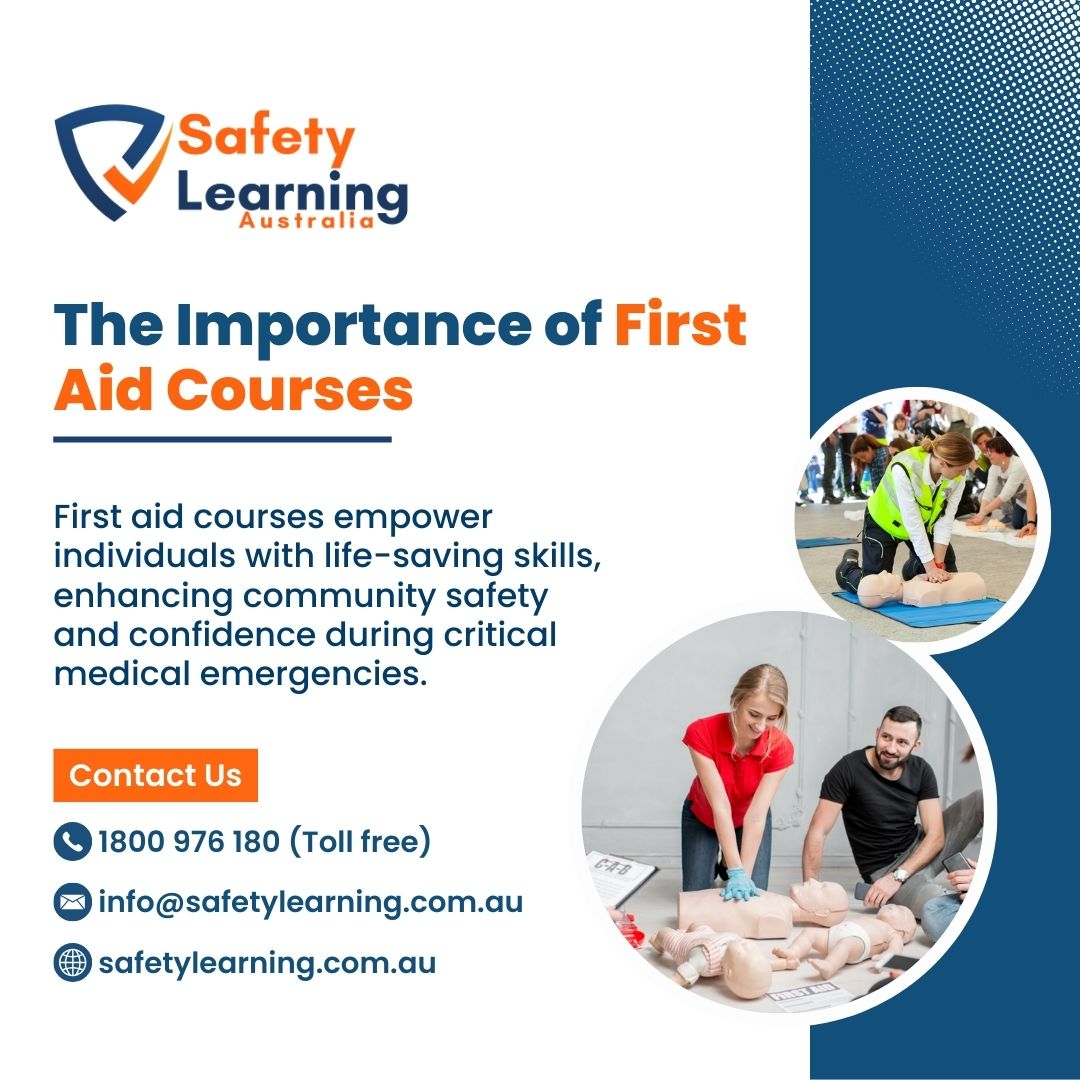First aid courses equip individuals with vital skills to handle emergencies confidently and effectively. From CPR and wound care to managing burns, fractures, and choking, these courses provide practical knowledge to stabilise victims before professional help arrives. Learning first aid not only prevents conditions from worsening but can also save lives, reduce recovery time, and foster safety awareness in everyday situations. Whether at home, work, or outdoors, first aid training empowers individuals to respond swiftly and calmly in life-threatening situations, making it an invaluable skill for everyone.
Understanding First Aid
First Aid refers to the immediate assistance provided to someone suffering from an injury or illness. It involves a range of techniques designed to stabilise a person’s condition until professional medical help arrives. Knowing how to administer First Aid can significantly impact outcomes during emergencies, making it a vital skill for everyone, from parents and teachers to healthcare professionals and everyday citizens.
Why Enroll in a First Aid Course?
1. Life-Saving Skills
The primary reason to take a First Aid course is to acquire life-saving skills. Training typically covers essential topics such as:
- CPR (Cardiopulmonary Resuscitation): A critical technique for restoring breathing and circulation in a person experiencing cardiac arrest.
- Choking Relief: Methods to assist someone who is choking, potentially preventing suffocation.
- Wound Care: Proper techniques for cleaning and dressing wounds, controlling bleeding, and treating burns and fractures.
These skills are crucial in emergencies and can make a significant difference in saving lives.
2. Building Confidence
Emergencies can be chaotic, and bystanders often feel uncertain about how to act. First Aid courses provide practical, hands-on training that builds confidence. Participants practice techniques in a controlled environment, which helps reduce anxiety when real-life situations arise. This confidence empowers individuals to take charge during emergencies, making them more likely to act promptly and effectively.
3. Enhancing Community Safety
When more individuals are trained in First Aid, the overall safety of a community improves. Imagine a neighborhood where parents, teachers, and local business owners are equipped to handle emergencies. This collective knowledge fosters a culture of care and preparedness, creating a safer environment for everyone. By taking a First Aid course, you contribute to a community that looks out for one another.
4. Meeting Workplace Requirements
Many workplaces require employees to have First Aid training, especially in industries such as healthcare, education, and construction. Understanding First Aid not only helps meet legal and regulatory requirements but also enhances workplace safety. Employees trained in First Aid can respond promptly to incidents, reducing the severity of injuries and ensuring a safer work environment.
5. Emergency Preparedness
First Aid courses often cover how to prepare for emergencies before they occur. This includes recognising potential hasards, creating emergency action plans, and understanding when to call for professional help. Being proactive in emergency preparedness can significantly impact outcomes during crises, ensuring that individuals and communities are ready to act.
What Do First Aid Courses Typically Include?
First Aid courses vary in content and duration, but most cover the following key components:
- CPR and AED Training: Learn how to perform CPR and use an Automated External Defibrillator (AED) to assist someone experiencing cardiac arrest.
- Wound Management: Gain skills in cleaning and dressing wounds, controlling bleeding, and treating burns and fractures.
- Choking Relief Techniques: Understand how to help someone who is choking, including the Heimlich maneuver.
- Medical Emergencies: Recognise and respond to emergencies such as heart attacks, strokes, seisures, and severe allergic reactions.
- Pediatric First Aid: Special considerations for administering First Aid to infants and children, vital for parents and caregivers.
- Emergency Action Plans: Learn how to assess situations and develop action plans for various types of emergencies.
How to Choose the Right First Aid Course
When selecting a First Aid course, consider the following factors:
- Accreditation: Ensure the course is accredited by a recognised organisation, guaranteeing that the training meets established standards.
- Instructor Qualifications: Check the qualifications and experience of the instructors leading the course. Experienced trainers can provide valuable insights and real-world scenarios.
- Hands-On Practice: Look for courses that emphasise practical, hands-on training. This approach helps reinforce skills and boosts confidence.
- Course Duration and Format: Courses can vary in length, from a few hours to several days. Choose a format that fits your schedule, whether in-person or online.
Real-Life Impact of First Aid Training
The true value of First Aid courses is illustrated through real-life stories. For example, a parent who learned CPR might save their child from choking, while a teacher trained in First Aid may manage a severe allergic reaction in a student. These scenarios highlight how First Aid knowledge empowers individuals to act decisively when it counts the most.
Case Study: The Power of Preparedness
Consider the story of a local community center that organised a First Aid training session for its staff and volunteers. Just weeks after the training, a participant was able to use their skills when a child suffered a severe cut during a recreational activity. The trained staff member quickly assessed the situation, applied proper wound care, and contacted emergency services, ultimately ensuring the child received timely medical attention. This incident underscores how First Aid training can have immediate, life-saving impacts.
The Importance of Continuing Education
First Aid techniques and guidelines can evolve, which is why ongoing education is essential. Many organisations recommend renewing your certification every two to three years. This ensures that your skills remain current and that you’re familiar with the latest protocols and advancements in First Aid.
Conclusion
First Aid courses are not merely skills to acquire; they are a pathway to becoming a proactive member of your community. By equipping yourself with the knowledge and confidence to handle emergencies, you can make a significant difference in the lives of those around you. Whether you’re looking to fulfill a workplace requirement, enhance your personal skills, or contribute to community safety, enrolling in a First Aid course is a step in the right direction.




